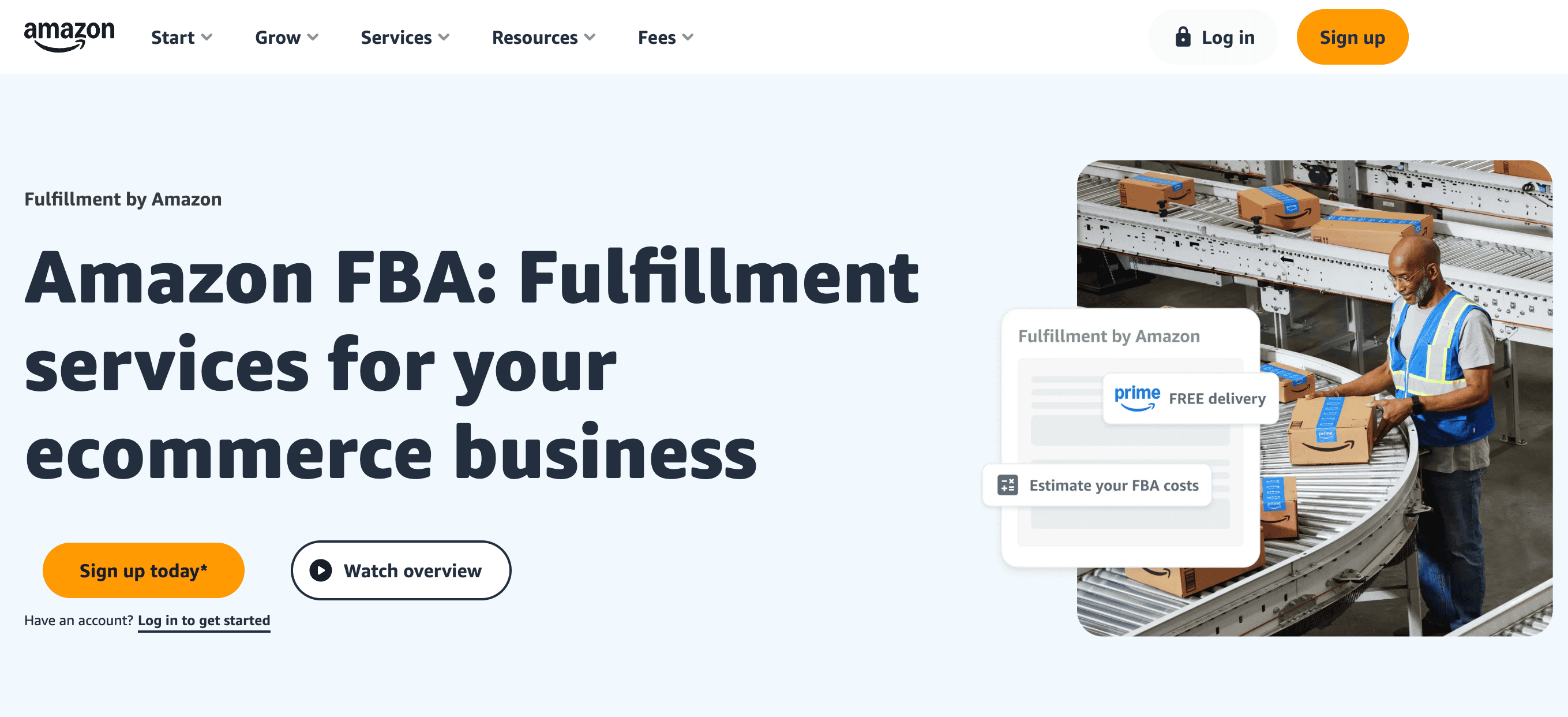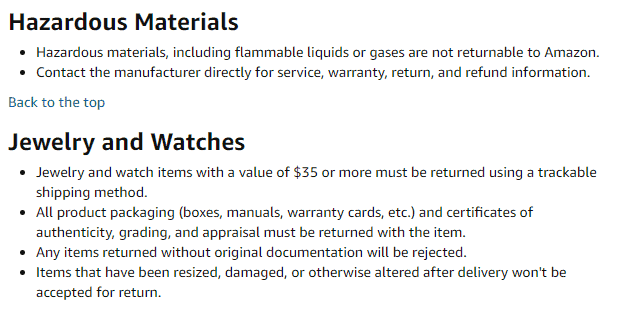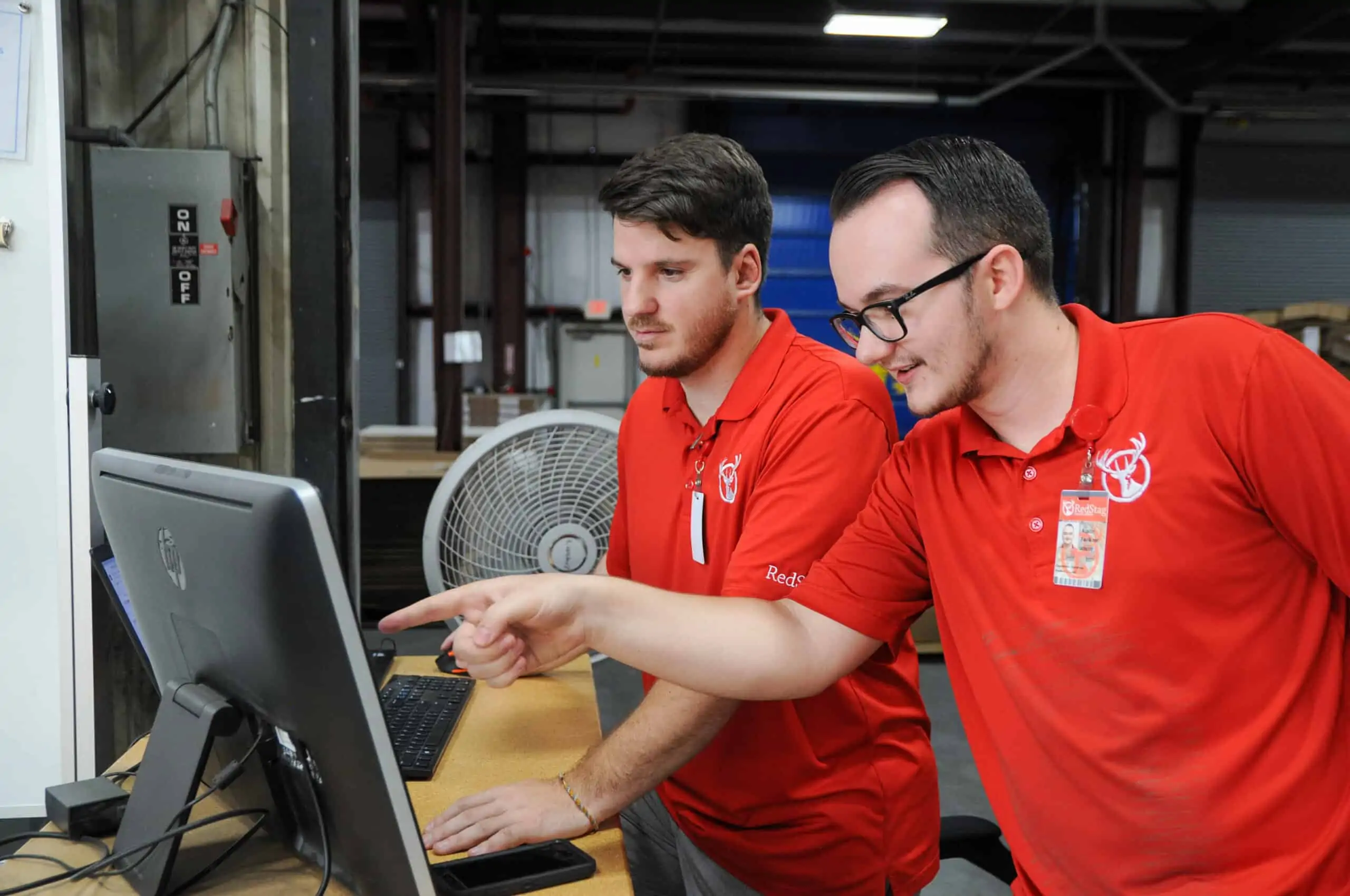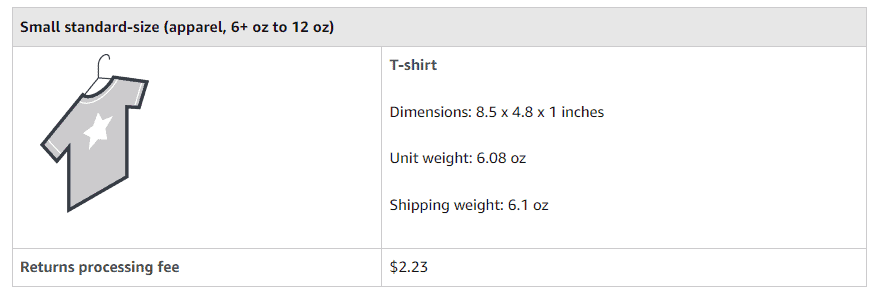Every ecommerce operation faces the threat of returned items but sometimes these risks are outside your control, like when the process is governed by the FBA returns policy. You want to keep things smooth and positive so that customers come back, but Amazon’s FBA program manages these interactions and sets the rules, so you’re left out of controlling and improving returns.
To help you understand what the FBA returns policy looks like for you and your customers, we’ve put together this breakdown on it. Let’s dive in and see how Amazon manages its FBA returns.

TL;DR:
Amazon FBA returns policy key takeaways

Amazon handles all returns for FBA sellers, following general Amazon return policies but with category-specific requirements.

Sellers are charged returns processing fees (starting at $2.12) for most customer-returned products.

Amazon determines if returned items are sellable and assigns fault for reimbursement purposes.

Options for returned items include returning to inventory, Grade and Resell program, liquidations, or donations.

FBA returns policy follows normal Amazon policies
01
Amazon says that it uses the overarching customer returns policies to determine if an FBA item is eligible for a return. There are some general policies around delivery, returns, and how the customer must send things back. However, most product categories have their own specific requirements and policies to follow.

While typically the customer has 30 days to return a product, Amazon says that it may extend this for some FBA products. You’ll want to discuss this with your Amazon rep specifically.
Ask if your product categories are likely to have extended time windows. Some sellers tell us that this occurs in categories with high rates of return or when the product always comes with a warranty that lasts longer than the 30-day window.

NOTE: Different product categories have different return windows. For example, baby items in new, unopened condition have a 90-day return window, and holiday purchases (November-December) can be returned through the end of January.
Return requirements

Amazon’s FBA return inspection process:
Amazon checks each returned item and determines if it’s sellable. Sellable items are put back into your inventory. Unsellable items are checked, and Amazon assigns fault to determine if you’ll be reimbursed for return fees. If you disagree with Amazon’s assessment, you’ll need to file a claim after the process concludes.
Note that indications for what is sellable change based on products and their categories and subcategories. Use the classification that Amazon provides to guide your determination. Searching the classification in your Seller Central account will lead you to the specific page for determining the condition of a return.

Extended returns window example
You’ll want to discuss returns with your Amazon rep because of how the FBA returns policy adapts to product categories. Amazon FBA “baby” items, for example, have a 90-day window for returns if they’re in new, unopened conditions. In this case, Amazon also handles the return support for the seller and will give the customer a free return label. This won’t work if you’re selling via Multi-Channel Fulfillment (MCF) orders.
Amazon also has an extended policy for holiday returns on FBA items that you sell and ship out during November and December. Returns are applicable through at least the end of January. (Just be prepared for holiday issues around inventory and returns.)
FBA returns policy: refunds and returns

PRO TIP: Nearly everything in Amazon’s refund and return policy comes with an asterisk. Amazon may issue full or partial refunds, or even “returnless refunds” where customers keep the item. Make sure you understand the specific policies for your product categories.
Amazon’s refunds give customers all or part of their money back. Sometimes, they issue a “returnless refund” where the customer doesn’t have to send the item back. In other cases, items can’t be returned but the customer may still be able to get a refund.
Returns require that the customer send the product back to the Amazon fulfillment center.
For sellers: FBA returns policy important notes
02
The FBA returns policy impacts you at the point the customer requests a return. From there, goods are sent to Amazon’s facilities and the company looks at damage or loss. Amazon assigns fault and will charge you or the customer appropriately. In some instances, Amazon says it is to blame and will refund the customer as well as returning some order costs to you. These can be tricky, such as carrier-related damage causing a product to be listed as “unsellable” and Amazon not reimbursing you. In that case, you’ll need to address it directly with the carrier.
Let’s look a little deeper at this and some of the important categories and characteristics of the FBA returns policy.
Returns processing fees
FBA applies a returns processing fee to customer-returned products, typically when Amazon offers free return shipping. Fees are applied per unit returned and based on the product tier. These are the same tiers you established when sending your inventory to Amazon’s FBA facilities. Remember that Amazon will check physical and dimensional weight to determine your fees.
Fees for small, standard items that are 6 ounces or less are $2.12. Between 6 ounces and 12 ounces, the fee climbs to $2.23. If you’re over 12 ounces but under 16 ounces, the fee is $2.32 for these small items. For example, say you sold a t-shirt that someone returns. Its shipping weight is 6.1 ounces and so you’re charged a returns fee based on that tier of $2.23.

Return reason required
Amazon requires shoppers to request a return and provide a reason. The reason listed is how it starts the process of determining who is at fault. That also determines who pays for return shipping costs and what fees you may be charged (more on that below).
Some are obvious in terms of fault. A customer not liking the color, having found a better price elsewhere, or an accidental order indicate their fault. Poor packaging causing damaging, defective items, or missing parts is often the seller’s fault. Amazon may take the blame if the order arrived late, was damaged during shipping, or was different from what was ordered.


PRO TIP: Amazon doesn’t charge returns processing fees for all product categories. Watches, jewelry, sunglasses, luggage, and handbags are typically exempt from these fees in the FBA returns policy.
Reimbursement approach
Amazon will directly refund a customer for your FBA order. After, it debits your seller account for part or all the refund value. Once the customer is made whole, Amazon may refund you that debit or add the goods back to your inventory. If it can’t, you’ll have to file a report indicating that the reimbursed item was damaged while in Amazon’s care. Amazon has country-specific reimbursement policies that you should be aware of, and we discuss the U.S. one here. Always look up your specific country policy.
So, let’s look at the U.S. FBA returns policy on reimbursements covering lost or damaged items. First, after the customer makes a claim, Amazon will refund or replace the item on behalf of your seller account. Amazon will receive the return and review it, potentially adding it back to your available inventory. If the product can’t be reused, Amazon will try to determine who is at fault. Amazon will refund you if it deems Amazon is at fault. If it’s unclear you’ll have to submit a claim for an item being lost or damaged.
The claim coverages shrinkage occurring during transit or storage in Amazon’s facilities. You’ll have to wait at least 60 days to file a claim but must file it within 18 months after the refund/replacement. Then you’re working through the Amazon policy to get reimbursed for the shrinkage Amazon caused.
Important notes

Amazon won’t reimburse you for items damaged by the customer, subject to recall, or considered defective.

There are no reimbursements for products that Amazon doesn’t allow customers to return.

Amazon won’t reimburse you if you issue a refund directly to the customer.

If a return doesn’t reach the fulfillment center within 60 days of the refund, Amazon typically will reimburse you completely and charge the customer.
Other seller and FBA fees
If a customer returns a product, you may be reimbursed for some of the fees associated with selling the product. FBA often credits sellers for part or all of the “Selling on Amazon referral fee” and if there is a variable closing fee. You’re not reimbursed for FBA fulfillment fees.

ALERT: If the buyer refuses to accept delivery because of damage, they are not charged, and you are not reimbursed by Amazon. You’ll have to make a claim with the carrier or insurance provider.
If the customer opened your product and caused it to need to be repackaged or otherwise adjusted, the customer will be charged a restocking fee. You may get a reimbursement of this amount unless Amazon takes responsibility for the condition of the returned item and issues you a reimbursement. Always verify the FBA returns policy on fees when you’re concerned about a charge.
Replacement information
In some cases, Amazon will use FBA stock to issue replacements to a customer. If they do this for your orders, Amazon ships the item from your inventory free of charge to the customer. Sellers are not charged fees, nor will they receive payments for any replacement order. Fees and what you paid during the original order are unaffected by any replacement order.
Amazon will only let a customer ask for a replacement if the same item is available in your inventory in FBA locations. Customers must return the original item in most cases. These details are tracked in the “Replacements” report from Amazon and can highlight product issues as well as any expenses.
Returned product actions
You’ve got a few options for your goods when they’re returned to an Amazon warehouse. These depend on the product and how it is returned. Amazon actions and programs include:
01
Back into inventory: Unopened and undamaged goods can sometimes be returned to your inventory as new units. These are sold and used as normal.
02
FBA Grade and Resell: This program allows you to take some returned items and offer them as used products for sale on Amazon. The FBA program will rate them on a scale from “Used — Like New” to “Used — Acceptable” and put up for sale. Amazon creates these listings for you after making the determination.
03
FBA Liquidations: A program that helps sellers liquidate excess inventory and returns. Items aren’t destroyed and you can minimize storage fees by selling items to a liquidator. Amazon determines the value based on average selling price — typically you get about 5% of that average per unit.
04
FBA Donations: Amazon also offers a program for you to donate eligible items to U.S. charities. Your goods are donated to Amazon partners, helps you avoid storage costs, and offers tax benefits.
A note on returnless refunds

NOTE: Amazon’s returnless refunds policy allows customers to keep a product but still get a refund. This usually happens with low-cost items or when shipping costs would exceed the product’s value. While this might seem frustrating, it can sometimes benefit you by avoiding return shipping costs for items where processing a return would cost more than the product itself.
Amazon has a returnless refunds policy that can seem like a pain on its face. In this case, Amazon allows customers to keep a product but still get a refund. That usually occurs for products with low costs and value, when shipping costs are high, or when reselling the product as used is difficult or not allowed. The FBA returns policy guidelines on this aren’t clear, but your Seller Central tools do allow you to set some price, category, and return rules for this process.
For you as the seller, the policy may provide some benefit. You can refund the customer without having to deal with returns costs. In some cases, those fees and shipping costs can outweigh what you make on the sale. For defective or damaged items, sometimes a returnless refund can help you avoid negative reviews or harm to your seller account.
Hurt by the FBA returns policy?
03
Amazon’s returns and other seller policies can be a difficult pill to swallow at times. You may face fees that don’t feel fair or costs that are hard to recoup. Red Stag Fulfillment can help you avoid some of these concerns with our FBA prep services. That’s designed to keep boxes and products safe as you inbound them to FBA facilities, limiting the chance that a return is your fault.
We also help customers move away from FBA to better control the customer service and returns process. Many find that offering two-day shipping to most of the U.S. provides the same benefits as Prime and other programs, because customers have become savvy enough to search for speed and availability. Our multi-channel and omnichannel solutions allow you to meet customers anywhere they are, including on today’s leading marketplaces.
Take control of your returns process
Tired of Amazon controlling your customer interactions and returns policy? Red Stag Fulfillment offers FBA prep services to minimize damage-related returns plus alternatives to FBA that give you back control over your customer experience and returns process.
Talk With UsIf you’re concerned about the FBA returns policy or want control to write your own returns program, contact us or use these resources to learn more.
















